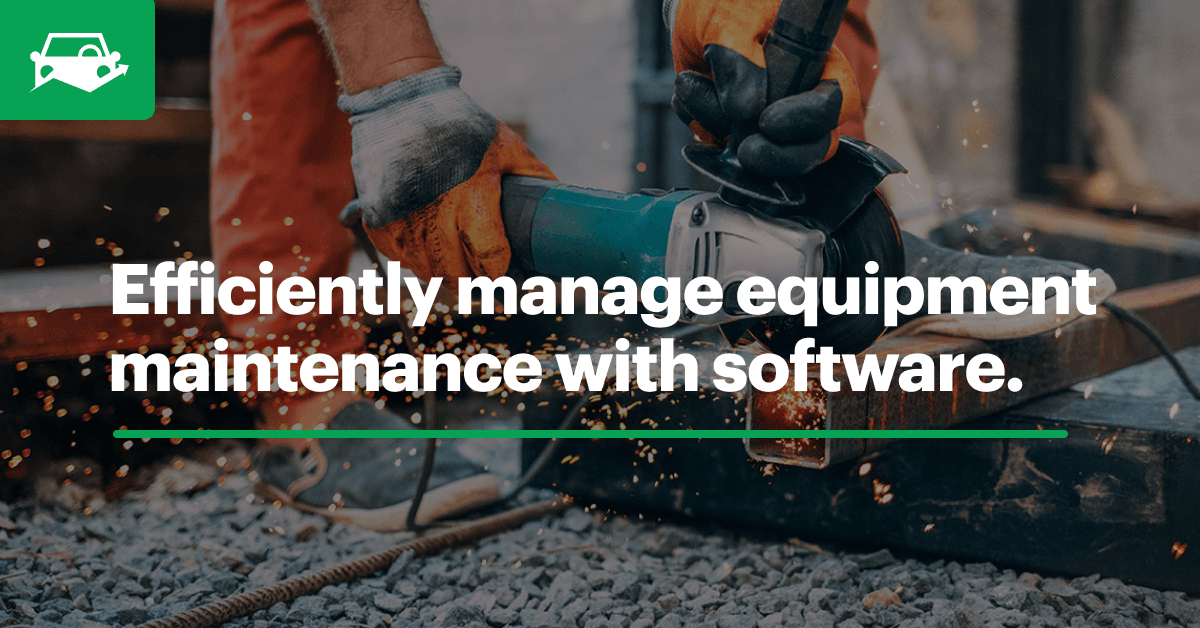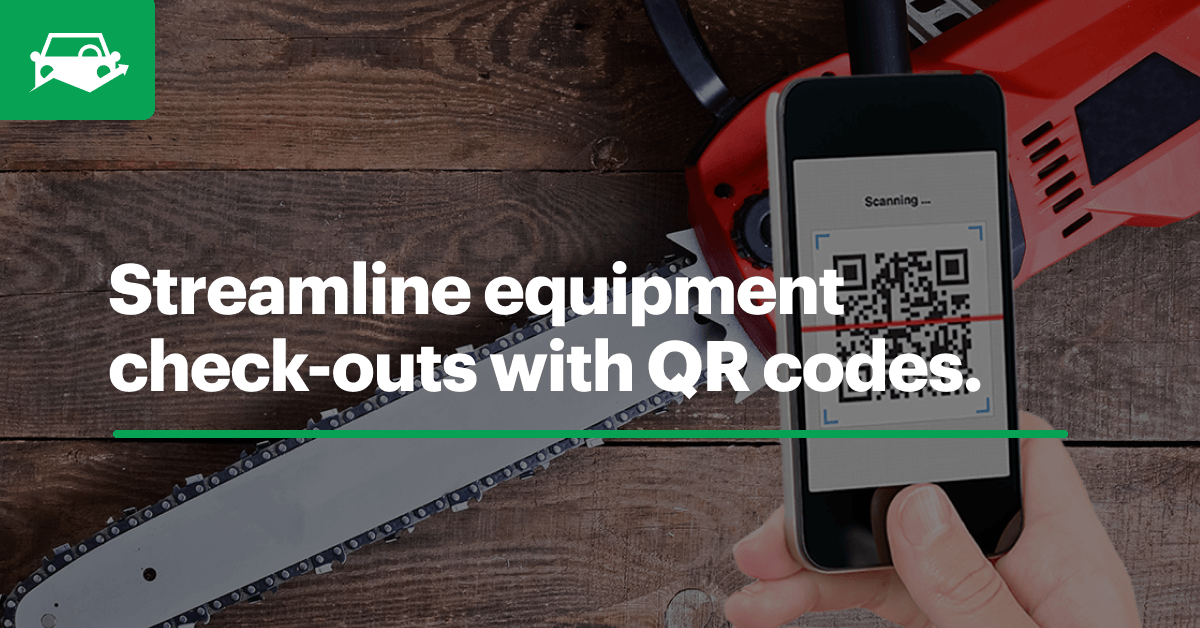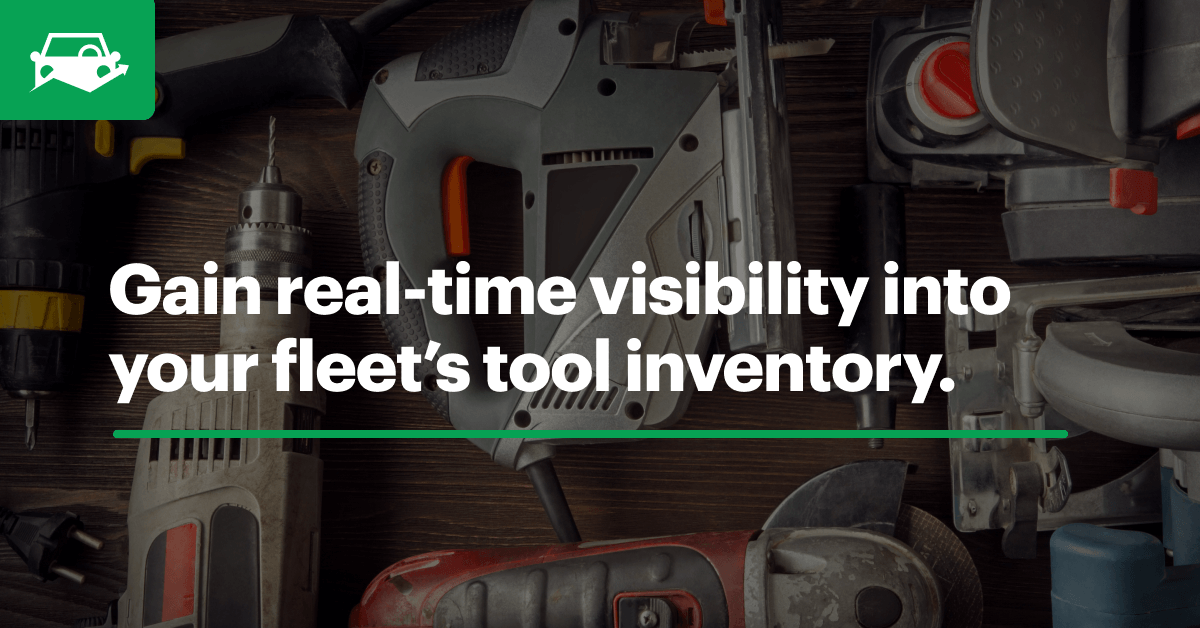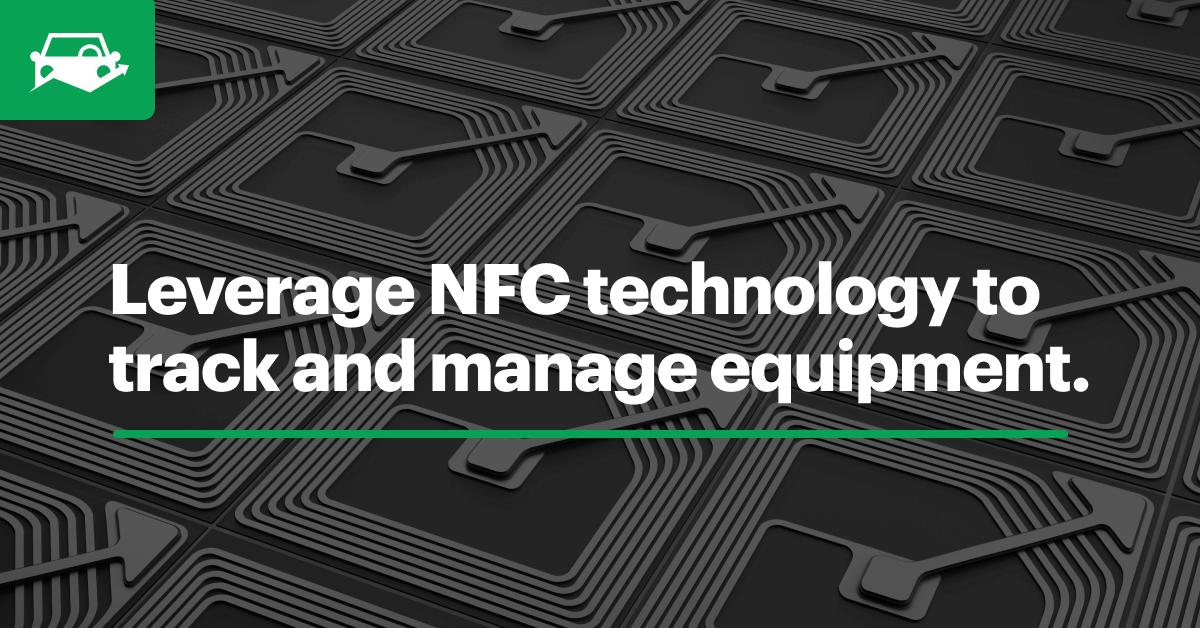Many fleets utilize a variety of small equipment and tools to complete tasks each day. Leveraging an equipment maintenance solution not only maximizes equipment lifespan, but it ensures you have an effective way to track and manage your tools.

Implement an Equipment Maintenance Solution
Attention to detail is one of the key qualities of a successful fleet manager. Tracking fleet vehicles is an essential part of your job, but many fleets have specialized tools and require an equipment maintenance solution to stay organized.
While your vehicles get your team to and from the job, your small equipment and tools help get the job done. Having a way to schedule and track maintenance of items like power tools, chainsaws, jackhammers and other equipment can be a challenge if you don’t have an organized management system.
Instead of managing your vehicles and equipment on paper, spreadsheets or disparate platforms, fleet managers can track all vehicles, equipment, tools and parts in a single, cloud-based software. Equipment management software allows you to remotely connect with your team and monitor equipment health to maximize productivity and avoid costly downtime.
Whether you're managing heavy equipment and machinery or specialized tools and small equipment, leveraging a centralized equipment maintenance solution to streamline tasks and track performance ensures your tools are ready when you need them.
Here are four equipment maintenance solutions to implement in your fleet management plan.
1. Assign Equipment to Individual Operators
Many service, construction and landscaping fleets rely on a variety of tools and small equipment to complete tasks each day. As a fleet manager, you’re not only responsible for tracking vehicle health; you also must be able to track the status and performance of all equipment.
Tracking tools can be challenging if you don’t have a way to comprehensively track equipment usage. Equipment often goes missing, causing you to take time out of your day to track it down. If it can’t be located, that can put a dent in your budget.
The best way to effectively track equipment is to assign tools to individual operators or vehicles in your equipment management software. This provides you instant visibility into which operator or vehicle each piece of equipment is assigned to.
Instead of trying to figure out who used a tool last or who is currently using it, you can manage equipment assignments and maintain an audit trail for each piece of equipment. This enables you to hold your team accountable for their equipment to ensure they properly care for each tool, avoid losing them and alert you of any equipment maintenance needs.
2. Standardize Equipment Inspections
It’s frustrating for crew members to pick up a piece of equipment and realize it’s broken. Your crew may not have a back-up tool, which can cause downtime on the job. Unfortunately, not being informed of broken equipment is a common pitfall for many managers.
To avoid these issues and maximize productivity, it’s important for your crew to routinely inspect equipment and have a way to communicate issues to you quickly. Your operators may already be inspecting their vehicles, so adding an equipment inspection to their daily tasks will be easy to implement.
Paper inspection forms are often an inefficient method of quickly communicating issues to fleet managers. They’re often damaged, misplaced or delivered weeks later after a piece of equipment has already broken.
Streamlining inspections with a mobile app allows your team to conduct fast inspections and deliver results to you instantly. Any inspection failures can be sent to your inbox, allowing you to troubleshoot immediately.
With a robust equipment maintenance solution like Fleetio, you can tailor inspection forms to your equipment’s needs. Fleet managers create configurable equipment inspections that are condensed compared to a vehicle inspection, ensuring your operators can efficiently identify issues for all of your assets.
3. Automate Maintenance Workflows
Just like your vehicles, your equipment must be properly maintained to perform efficiently when needed. Not only does this help you avoid downtime, but an effective equipment maintenance solution ensures you maximize equipment lifespan to boost your return on investment (ROI).
Preventive Maintenance
In addition to using inspection data to manage maintenance, fleet managers can automate service reminders in equipment management software. Scheduling routine preventive maintenance for your equipment ensures they stay in good shape and enables you to monitor equipment health as it ages.
Because equipment varies greatly, configurable equipment management software allows you to create service reminders that fit your needs. Whether you need a reminder to replace a drill bit on a jackhammer or change the fuel filter on a leaf blower, you can sustain a proactive preventive maintenance schedule to ensure asset health.
Work Orders
Trying to schedule and monitor maintenance tasks can be difficult enough for vehicles alone. Tracking progress and ensuring tasks get done for both your fleet and your small equipment can be challenging without a way to manage tasks and stay connected with your team.
Using a collaborative equipment maintenance solution allows you to create and manage web and mobile work orders to track maintenance needs and efficiently communicate with your team. Keep things organized linking reported equipment issues to work orders and tracking detailed line items to monitor progress and expenses.
4. Track Equipment Maintenance Expenses
Maintenance is one of the largest ongoing costs for any fleet, but effective maintenance management ensures you’re getting the most out of your equipment to lengthen asset lifespan.
Replacing tools and equipment can eat into your bottom line, so it’s important to have an equipment maintenance solution that allows you to closely monitor asset health and comprehensively track maintenance expenses.
Leveraging an equipment maintenance solution that has powerful reporting capabilities allows you to closely track expenses on a granular level. Fleet managers can analyze both real-time and historical expense data to determine financial health, uncover budget discrepancies and identify costly repair trends.
Pairing expense insight with a strong fleet maintenance strategy ensures you aren’t overspending or constantly replacing equipment. You can maintain an accurate look at your fleet’s total cost of ownership and make confident equipment maintenance decisions based on accurate data.
Protect the tools of your trade by managing equipment maintenance in Fleetio! Start your free trial or request a demo today.




